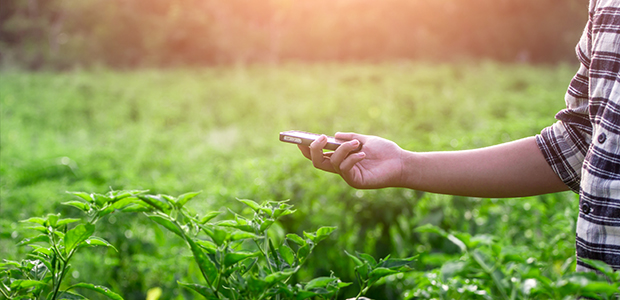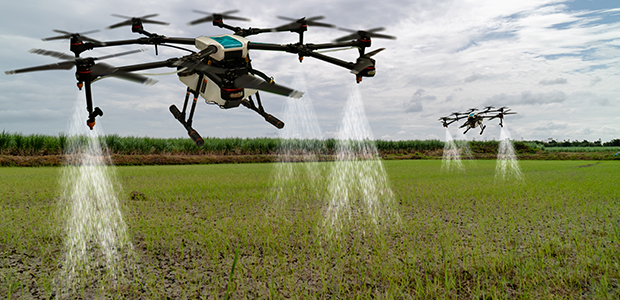Sensors play a large role in the future of farming and developing innovation in this area will help save money, reduce environmental impact and increase farming productivity.
Cassie Sims
The importance of digital technology, such as sensors and artificial intelligence (AI), is increasing as traditional strategies become less effective.
Smart agriculture, or using precise technologies to carefully manage farms, is a trend that dates back to the 1980s. Using technology can help farmers to micro-manage crops, mapping fields and monitoring resources. The trend began when Global Positioning System (GPS) capability became more widespread.
Initially, smart agriculture involved farmers manually monitoring fields, tracking crop growth and weed distribution. This meant they could save money by applying herbicide only to areas that needed it. Quickly, increased monitoring capabilities allowed more careful farm management, and increased overall efficiency.
By integrating monitoring with models, farmers were then given accurate recommendations for fertiliser application, pH correction, watering and when to harvest the crops for optimal yield. Newer technology is linking sensor technologies with smartphone apps and AI to generate real-time advice for farmers.
Innovating sensors
A wide range of agricultural sensors are commercially available, including GPS, electrochemical sensors that monitor soil nutrient and pH levels, optical senses that monitor light, mechanical sensors for monitoring water absorption, soil physics and general weather sensors.
Sensors can feedback to smartphone applications giving farmers the opportunity to make real time decisions.
Innovations are needed in the way we use data and how we integrate many pieces of information into one, customised, precise farm management plan. Companies such as Motörleaf have developed customised technologies that work in greenhouses. They stress the importance of an effective AI in their product.
‘Other greenhouse technologies lose value over time from wear-and-tear. What's remarkable about AI is that it gets better and better over time with more greenhouse data, providing more and more value to greenhouses. That's a world first,’ said Alastair Monk, the CEO of Motörleaf.
Although current sensing data is very efficient, there are still gaps in the market where innovation is needed to develop sensing technologies. Firstly, there is limited monitoring for pest species. Currently, most pest species are monitored by manual trapping, often at a large scale by projects, such as the Rothamsted Insect Survey.
Apps like FieldIn have begun offering solutions to pest management. Starting with fruit growers, like orchards, groves and vineyards, FieldIn prides themselves on using farmers intuition to build their software, which combines monitoring with spray planning, and allows you to even track sprayers as they move around the field. Their application allows you to ensure efficient pesticide spraying.
Using sensor technology can allow for precise application of pesticides and herbicides, reducing environmental impact and cost.
Another problem with using sensors is adapting those which work in controlled environments, such as glasshouses, and applying them to open fields where some factors cannot be as carefully controlled.
Future sensing technology should focus on the untouched areas, expanding careful monitoring that can be accomplished in controlled environments to field in the open and in remote locations. Models that integrate different types of data with cheap and easy to use interfaces will inevitably shape the future of smart agriculture.


